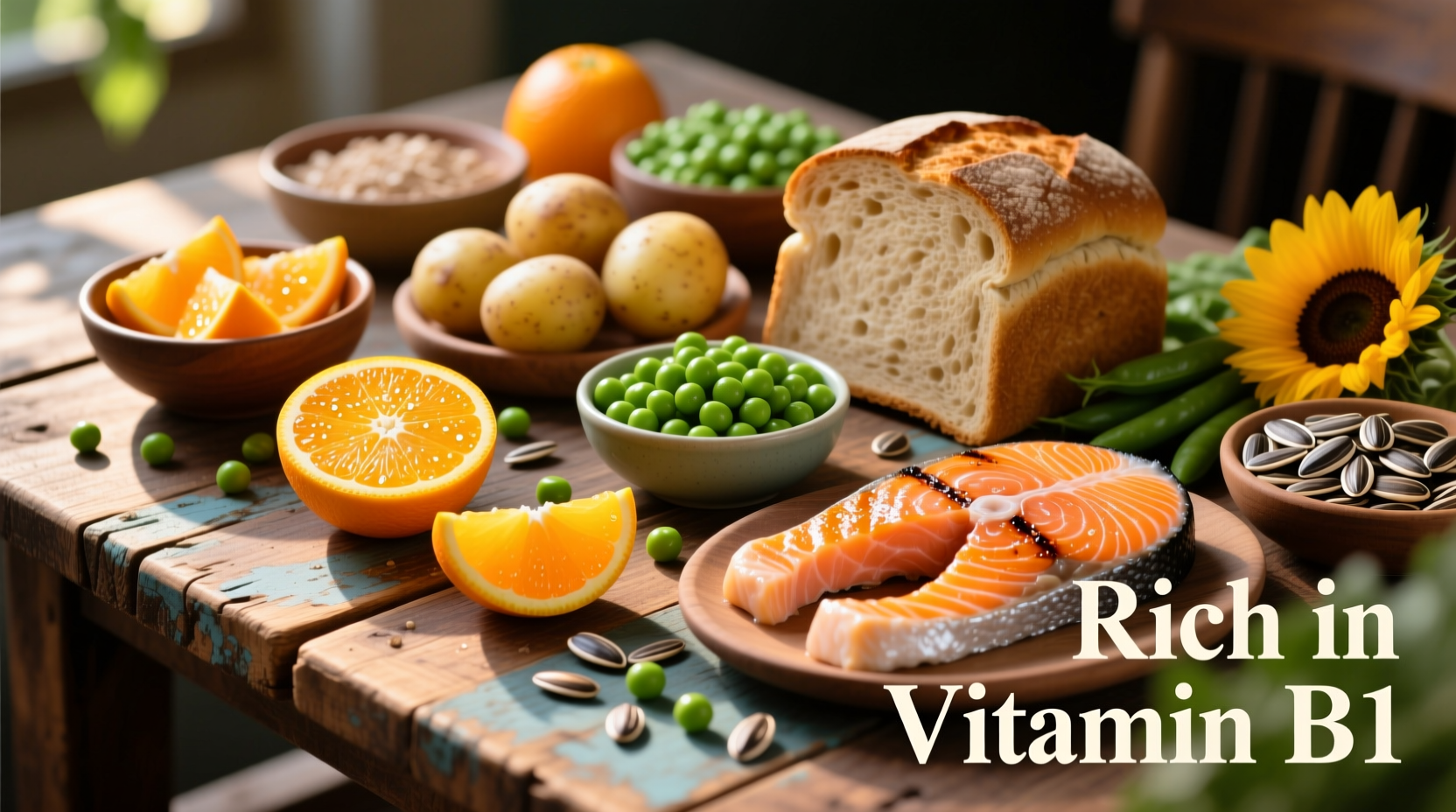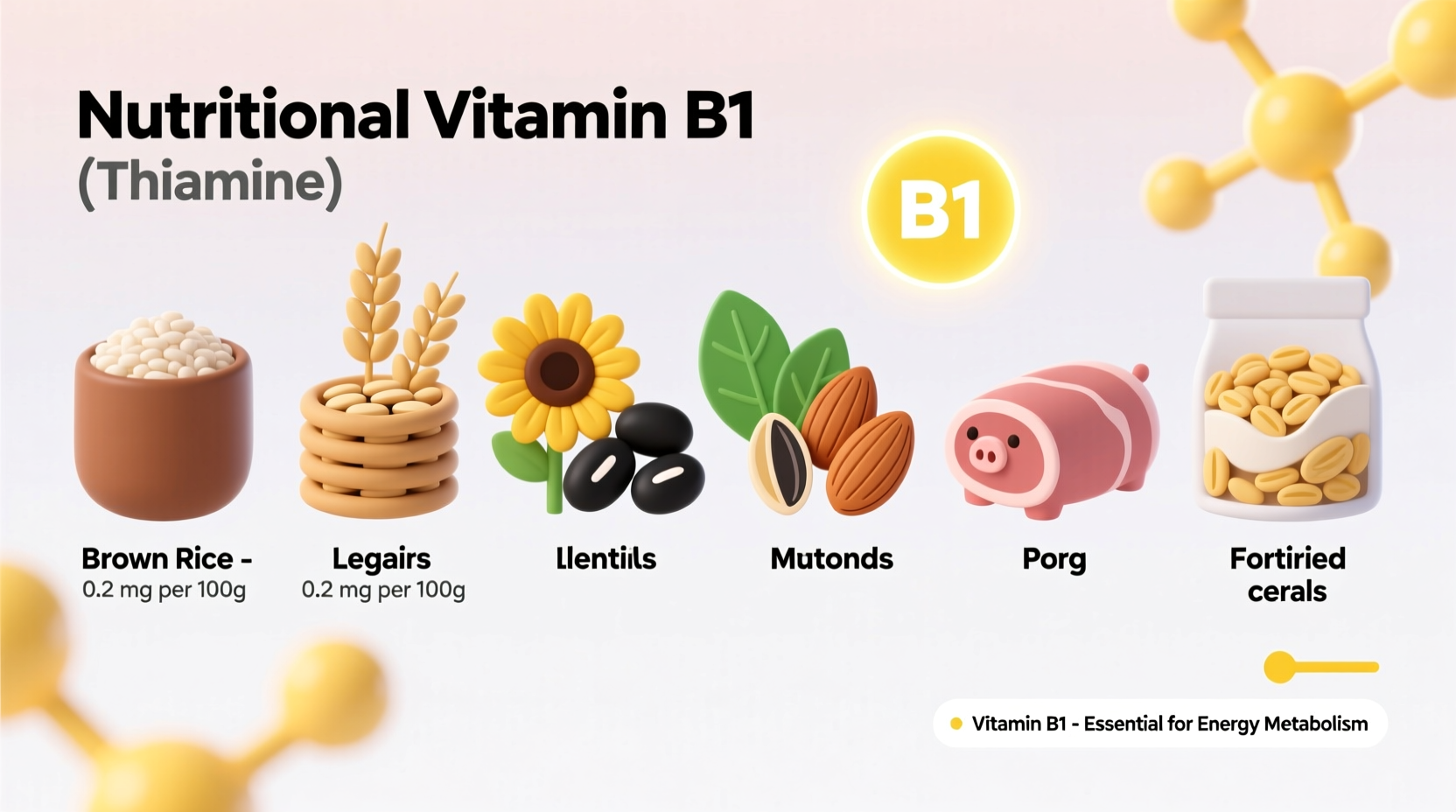Vitamin B1 (thiamine) is found in pork, sunflower seeds, lentils, black beans, navy beans, whole grains, and fortified cereals. Just 3 ounces of pork provides 100% of your daily thiamine needs, while 1/4 cup of sunflower seeds delivers 70%. This essential nutrient supports energy metabolism and nerve function, with adults needing 1.1-1.2 mg daily.
Discover the top food sources that can help you meet your daily thiamine requirements and maintain optimal energy levels. Whether you're addressing a potential deficiency or simply optimizing your nutrition, understanding which foods contain the highest concentrations of vitamin B1 is essential for maintaining proper nerve function and energy metabolism.
Why Vitamin B1 Matters for Your Health
Vitamin B1, also known as thiamine, serves as a coenzyme in your body's energy production process. Without adequate thiamine, your cells cannot properly convert carbohydrates into energy. This water-soluble vitamin plays a critical role in nerve impulse transmission and maintaining cognitive function. According to the National Institutes of Health, thiamine deficiency can lead to fatigue, irritability, and in severe cases, beriberi—a condition affecting the cardiovascular and nervous systems.

Top Food Sources of Vitamin B1
Understanding which foods contain the highest concentrations of thiamine helps you make informed dietary choices. The following table shows the top sources based on USDA FoodData Central measurements:
| Food | Serving Size | Thiamine (mg) | % Daily Value |
|---|---|---|---|
| Pork chop | 3 ounces | 0.72 | 60% |
| Sunflower seeds | 1/4 cup | 0.64 | 53% |
| Lentils | 1 cup cooked | 0.33 | 28% |
| Black beans | 1 cup cooked | 0.42 | 35% |
| Fortified breakfast cereal | 1 serving | 0.5-1.5 | 42-125% |
| Trout | 3 ounces | 0.27 | 23% |
How Cooking Methods Affect Thiamine Content
Thiamine is water-soluble and heat-sensitive, meaning certain cooking methods can reduce its availability in food. Boiling causes the greatest loss as thiamine leaches into cooking water. Research from the Harvard T.H. Chan School of Public Health shows that simmering pork for 30 minutes can reduce thiamine content by 15-20%. Conversely, dry-heat methods like roasting or grilling preserve more thiamine. When preparing legumes, avoid discarding cooking water—use it in soups or stews to capture the leached nutrients.
Daily Requirements Across Life Stages
Your thiamine needs vary based on age, gender, and life stage. The National Academy of Medicine established these daily requirements:
- Adult men (19+ years): 1.2 mg
- Adult women (19+ years): 1.1 mg
- Pregnant or breastfeeding women: 1.4 mg
- Teenagers (14-18 years): 1.2-1.3 mg
- Children (9-13 years): 0.9 mg
Individuals with certain conditions like diabetes, gastrointestinal diseases, or those recovering from bariatric surgery may require higher thiamine intake. Alcohol consumption significantly impairs thiamine absorption—chronic alcohol use can reduce absorption by up to 70% according to Mayo Clinic research.
Recognizing Potential Deficiency
Early signs of thiamine deficiency often go unnoticed but can include fatigue, irritability, and poor concentration. As deficiency progresses, symptoms may develop into:
- Muscle weakness
- Appetite loss
- Peripheral neuropathy (tingling in hands/feet)
- Confusion or memory problems
Vegans and vegetarians should pay special attention to thiamine intake since plant-based sources generally contain less thiamine than animal products. However, incorporating fortified grains, legumes, and seeds can easily meet requirements without supplementation.
Practical Ways to Boost Your B1 Intake
Adding thiamine-rich foods to your daily meals doesn't require major dietary changes. Try these simple strategies:
- Start your day with fortified whole-grain cereal (provides 25-100% of daily needs)
- Add sunflower seeds to salads, yogurt, or oatmeal (just 2 tablespoons gives 20% of daily needs)
- Choose whole wheat bread over white (whole wheat contains 3x more thiamine)
- Include legumes in soups and stews 3-4 times weekly
- Prepare pork tenderloin with minimal cooking liquid to preserve nutrients
For those following plant-based diets, combining multiple thiamine sources throughout the day ensures adequate intake. A sample day might include fortified cereal at breakfast, lentil soup at lunch, and black bean tacos with whole grain tortillas for dinner.











 浙公网安备
33010002000092号
浙公网安备
33010002000092号 浙B2-20120091-4
浙B2-20120091-4